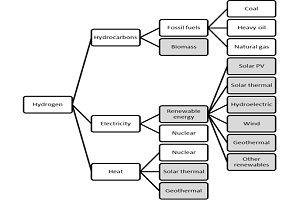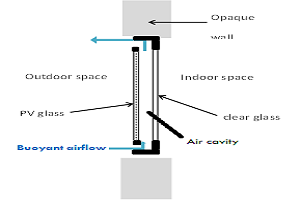Day 1 :
Keynote Forum
Marc A. Rosen
University of Ontario Institute of Technology, Canada
Keynote: Enhancing renewable energy prospects via hydrogen energy systems
Time : 10:15-10:55

Biography:
Marc A. Rosen is a Professor at the University of Ontario Institute of Technology in Oshawa, Canada, where he served as founding Dean of the Faculty of Engineering and Applied Science. Dr. Rosen was President of the Engineering Institute of Canada. He is a registered Professional Engineer in Ontario, and serves as Editor-in-Chief of several journals and Director of Oshawa Power and Utilities Corporation. With over 60 research grants and contracts and 600 publications, Dr. Rosen is an active teacher and researcher in sustainable energy, environmental impact, and energy technology (including renewable energy and efficiency improvement). Much of his research has been carried out for industry, and he has written numerous books. Dr. Rosen has worked for such organizations as Imatra Power Company in Finland, Argonne National Laboratory near Chicago, and the Institute for Hydrogen Systems near Toronto. Dr. Rosen has received numerous awards and honors.
Abstract:
The prospects for renewable energy are enhanced through the use of hydrogen energy systems in which hydrogen is an energy carrier. As easily accessible fossil fuel supplies become scarcer and environmental concerns increase, hydrogen is likely to become an increasingly important chemical energy carrier. As the world’s energy sources become less fossil fuel-based, hydrogen and electricity are expected to be the two dominant energy carriers for the provision of end-use services, in a hydrogen economy. Thus, hydrogen energy systems allow greater use of renewable energy resources. In this presentation, the role of hydrogen as an energy carrier and hydrogen energy systems, and their economics, are described and reviewed.
There are many commercial processes for producing hydrogen from fossil fuel and non-fossil fuel sources (including renewables). Technologies for the storage and distribution of hydrogen exist. Technologies are developing for utilizing hydrogen as an energy carrier, especially in transportation. The technologies needed for hydrogen energy systems are undergoing much research and development.

Keynote Forum
Tin-Tai Chow
City University of Hong Kong, Hong Kong SAR, China
Keynote: Building Integrated Active and Passive Solar Design
Time : 11:15-11:55

Biography:
Tin-Tai Chow received his PhD from the University of Strathclyde in Scotland. He is currently the Associated Professor and Director of the Building Energy and Environmental Technology Research Unit at the City University of Hong Kong. He has 400 academic publications, including over 130 SCI journal articles and with over 4,000 Scopus citations. His Scopus H-index reaches 35. He has been serving as members of many journal editorial boards, such as the Journal of Building Performance Simulation. He also contributes to many reputable international conferences as committee members and invited speakers. He holds fellow membership in many professional institutions, such as FASHRAE and FCIBSE
Abstract:
The interest in zero carbon building developments is increasing year by year. This makes it important to maximize the renewable power outputs and thus favors the use of hybrid generating systems. Combined active and passive solar design is an evolving science in building technology. Traditionally, building facade is one crucial element in architecture. Nowadays, it has escalating importance in services engineering owning to its significant influence on the engineering system performance and energy use. Building integrated solar devices may be installed either at the building façade or on the roof. The system can be designed as invisible, aesthetically appealing, or appearing as an architectural concept. Advances in the development of multi-functional photovoltaic/thermal (PV/T) facades may provide an important stimulus for architectural expression. On the other hand, the design of extensively-glazed building is a world-wide architectural trend. At this end, the PV ventilated glazing technology offers substantial energy saving opportunities through air conditioning load reduction, more favorable daylight penetration, and solar energy utilization. On the other hand in the liquid-flow window option, a thermosyphon-induced liquid stream flows within the cavity to the heat exchanger for feed water pre-heating. The building integrated active and passive solar designs then ask for the consideration of all building components and services systems at one shot, well at the project commencement stage. In other words, site planning, aesthetic design, system equipment and construction material selection, financing, construction, commissioning, and long term operation and maintenance have to be well coordinated. These become alternative challenges to be overcome.

Keynote Forum
Peter Novak
Institute for High-technologies and Systems, Slovenia
Keynote: Exergy as measure of sustainability of energy system
Time : 11:55-12:35

Biography:
P. Novak was professor and Chief Laboratory for HVAC and Solar Energy all at Fac. of Mech. Eng. Ljubjana, Dean of Faculty, Dean of High School for Technologies and Systems, Novo mesto and Director of the Institute for High-technologies and Systems. Last activities in EEA, Past Vice-chairman of Scientific Committee at European Environmental Agency, Copenhagen, 20012-2016 Scientific Activities: Heat and mass transfer in buildings and building equipment, solar energy, environment and climate change. For his activities become: Honorary Member of IIR, 2003, Fellow and Life Member of ASHRAE 1999; Honorary Member of REHVA, SITHOK and SLOSE. Publications and Mentorships: Author and co-author of more than 430, scientific papers, studies, reviews, owner of 10 patents, mentor of 20 PhD students, more than 25 Master students and more than 300 engineering students. Publication information’s are available, from 1980 on www.COBISS.si, Slovenian cooperative online bibliographic system under No. 00956.
Abstract:
Do we need energy or exergy? Amount of exergy in energy carriers is very different and prices include value of quantity and not the quality of energy. Exergy is measure for quality of energy, because the only part of energy available to do work is exergy. For different purposes we need energy with different amount of exergy: for heating and cooling energy mixture between small amount of the exergy and large part anergy is needed. Transition to sustainable energy system, without GHG emissions, based on RE, open the questions how to evaluate exergy from solar energy. Solar energy in all form (irradiation, water flows, wind, and biomass) consists from nearly 100% of exergy. Solar energy is for free, conversion systems are not. To exploit at maximum the present infrastructure there is common agreement that we need sustainable energy system with four main energy carriers: electricity, gaseous, liquid and solid fuels.
Our vision is the new Sustainable Energy System (SES) based on the biomass carbon recycling using solar and planetary energy for electricity and hydrogen production. SES is based on the existing infrastructure and known chemical processes. With regards to availability of renewable energy resources (RES) it is unrestricted in comparison to present fossil fuels use. The proposed SES consists of the three main energy carriers: electricity, synthetic methane (CH4) and synthetic methanol (CH3OH).

